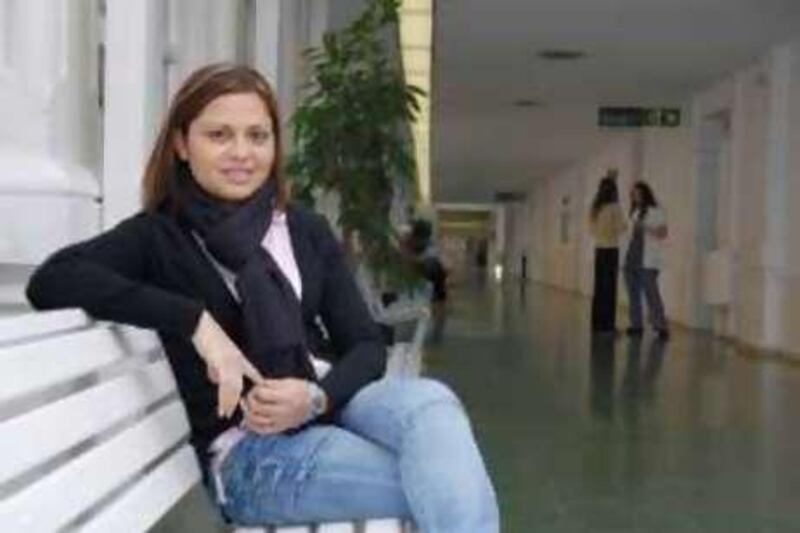There was a high level of excitement in the medical profession last week when a breakthrough in adult stem cell research was reported in the online edition of The Lancet. The article revealed that a multidisciplinary team from different research institutes based across Europe had successfully carried out the first tissue-engineered trachea transplant into a young woman utilising her own stem cells. Professor Martin Birchall from the University of Bristol in England whose laboratory research team grew the stem cells obtained from the patient tried to contain his excitement about the life-saving procedure. "We do think this is the first step of a new promising phase of medicine," he said. "We have to be cautious, but it gives others the impetus to apply for ethical permission to try this work on clinical patients."
Claudia Castillo, a 30-year-old mother of two, had been suffering from a collapsed lung following a severe case of tuberculosis when she was hospitalised in Barcelona, Spain earlier this year. Usually in such cases, the only option is to carry out an operation to remove the failing lung, but this carries with it a high risk of mortality. Instead the group of researchers replaced the lower trachea and bronchus to the patient's left lung with a bio-engineered airway. The scaffold for this bioengineered windpipe came from a seven centimetre tracheal segment from a 51-year old cadaveric transplant donor in Spain.
The first step saw this section of donor trachea have all of its cells removed using a new technique developed at Padua University called decellularisation. This process took six weeks to make sure that no donor cells remained. While this was going on Prof Birchall's team was busy carrying out the second stage of the process over a three-week period: obtaining and growing the stem cells from the patient's bone marrow. Stem cells have the ability to be manipulated into multiple forms of individual cells with specific functions. In this case they were matured into cartilage cells, also called chondrocytes, using an adapted method originally devised for treating osteoarthritis by Professor Anthony Hollander, a colleague of Professor Birchall's at Bristol University.
From here the biological components were transported to Barcelona for the next stage. Using a unique bioreactor which incubates cells created at the Politecnico di Milano in Italy, the donor trachea was placed in the perfect environment to become seeded with the chondrocytes. This allowed them to migrate into the tissue and in order to replicate the lining of the trachea, epithelial cells were seeded into the inside of the windpipe using the same bioreactor.
Four days later the entire process was finished and the bioengineered trachea was successfully transplanted into Claudia Castillo in an operation carried out by Professor Paolo Macchiarini of the University of Barcelona in the city's Hospital Clinic. He was delighted with the results. "Just four days after transplantation the graft was almost indistinguishable from adjacent normal bronchi. After one month, a biopsy elicited local bleeding, indicating that the blood vessels had already grown back successfully," he revealed.
Prof Macchiarini is lead author of the paper in The Lancet and Prof Birchall emphasised the role the surgeon played in the entire process, from start to finish. "It didn't happen overnight. I've known Macchiarini and collaborated with him for the last 10 years," he said. "He can speak six languages and is a brilliant surgeon. He was uniquely positioned to find the best experts in the different areas and bring them all together to carry out this operation."
This was no small feat. Collaborations between scientists and doctors from the same country can be difficult at the best of times. To bring research groups from different specialist areas and different countries to work together successfully could be considered a breakthrough in itself. "The thing about this work is that we've been able to get doctors and scientists to talk with one another constructively. This is difficult to do," Prof Birchall said. "We were using different steps, and everything was state of the art. Each individual step is present in many labs around the world and it was a real leap of faith that brought them all together."
The success of this high profile medical procedure will provide a boost to stem cell research in general, but this breakthrough highlights the distinction between studies using embryonic and those using adult stem cells. Medical and science institutes from across this specialist area are likely to emphasise the need for ongoing funding in all areas of stem cell research. However, Prof Birchall was careful to point out that for the work led by Prof Macchiarini it was adult stem cells that were the key.
"The bulk of organ transplants in this area will use adult stem cells. There's little controversy over using adult stem cells. The ethics over the use is different from that of embryonic stem cells," he said. "Embryonic stem cells have the potential to cure certain diseases, but adult stem cells should be used wherever possible." Prof Birchall is now focused on further research using adult stem cells and the careful collaboration of the different parties involved. "We've done this without funding. We're applying to the EU and the MRC to receive funding to do more research and clinical studies and we have a series of patients lined up," he said.
In the years to come, Prof Birchall indicated that adult stem cells will also be used to create cells with functions other than those carried out by chondrocytes, and he believes all the indications suggest the findings will bring further breakthroughs. "Our future research will look at the voice box and we'll be working with muscles. We're very confident that our future work will be successful," he concluded.
Peter Donnelly is a science correspondent for IIR Middle East in Dubai.






